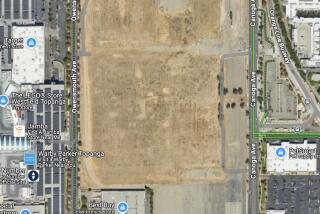Danger Found in Trade Center Air
Smoke and dust from the destroyed World Trade Center buildings exposed residents of lower Manhattan to weeks of some of the highest levels of air pollution ever studied, a team of California scientists reported Monday.
Carefully analyzed samples of air collected about a mile from the World Trade Center site in the weeks after the attacks show extraordinarily elevated levels of tiny particles laced with soot and metals, the researchers said. Fires smoldering in the rubble turned glass, concrete and computer equipment into an aerosol fallout that was far more intense and persistent than expected, they added.
“No one has ever reported a situation like the one we see in the World Trade Center samples,” said Tom Cahill, an atmospheric physicist at UC Davis and the leader of the project. “In New York City and in most of the world, situations like this just don’t exist.”
Cahill and his colleagues report finding almost no asbestos and very little lead in the air--two pieces of good news for worried New Yorkers. They also found that the pollution levels had dropped sharply by late October. But those reassurances for many in the city may be outweighed by the intensity of the pollution the researchers did find: weeks of very high levels of sulfur and sulfuric acid, titanium, nickel and minute particles of silicon from pulverized glass and concrete.
For many of the pollutants, the exact health effects are unknown. But recent studies have shown that tiny particles can penetrate lungs and be absorbed into the bloodstream. Exposure to particles has been linked to elevated rates of cancer, heart attacks and asthma.
The condition of New York’s air in the aftermath of the trade center disaster has been the subject of heated political debate for months. The federal Environmental Protection Agency has said their studies showed air in Manhattan was safe. But many New York residents and politicians and the EPA’s own ombudsman have suggested the agency has improperly downplayed health concerns.
Independent Study Widens Debate
The new research represents the first publicly available assessment from independent, university-based researchers. The findings quickly exacerbated an already irate debate.
“We now know enough to be alarmed and outraged at the federal government’s response to the environmental impact of 9/11,” said Rep. Jerrold Nadler (D-N.Y.), whose district covers much of the affected area.
“The EPA has created a full-scale crisis of public confidence,” Nadler said at a Senate Environment and Public Works Committee hearing called to examine the government’s response to New York’s pollution exposure.
EPA spokeswoman Bonnie Bellow declined to comment on the findings, saying agency officials had not been able to read and review the research.
“We recognize people have concerns, and we are concerned about people’s safety,” Bellow said.
Cahill, however, said the EPA failed to identify more air pollutants over a wider area because the techniques and equipment it used do not capture the tiniest particles, which the agency’s own scientists have acknowledged are the most hazardous.
“The EPA could have identified these particles within a couple of days if they looked for them, but they didn’t,” Cahill said.
The researchers from California, who have extensive experience analyzing airborne pollutants, collected air samples in Manhattan at the request of the Energy Department from Oct. 2 to mid-December. Rainstorms washed out most of the large particles, they found. But large masses of tiny specks remained airborne until the fires were extinguished in late October.
Scientists collected particles continuously for three months and used seven tests to sort them based on color, size and chemical composition. They scanned particles with lasers and electron microscopes at Davis and the Energy Department’s Lawrence Berkeley and Lawrence Livermore national laboratories to determine their chemical compositions.
The results showed that the level of particles in New York’s air outdid even the worst pollution from the Kuwait oil field fires.
The main problem was tiny particles, which can penetrate deep into the lungs and enter the bloodstream. New York particle pollution concentrations were 50 times greater than those found in California’s San Joaquin Valley, one of the smoggiest places in the nation, Cahill and his associates reported.
Harmful Particles Slip Indoors
While the widespread pollution from the fires has ended, scientists who conducted the research say danger has in many cases moved indoors.
The particles, many of them more than 100 times smaller than the diameter of a human hair, easily slip past windows and doors and collect on drapes and carpets. Confined inside apartments or offices, they can pose a long-term health risk unless properly removed.
“These particles are ultra-fine and can suspend in the air for a long, long time. They behave more like a gas and are hard to remove,” Cahill said.
While the exact health risk is uncertain, many New York residents have refused to move back into apartments or offices. Parents have refused to send children back to schools near the trade center site until they are convinced the air is safe.
The researchers endorsed recommendations from the New York City Health Department that New Yorkers wipe all interior surfaces with wet cloths and avoid vacuuming or sweeping.
“I would be extremely careful moving into indoor space or else you will re-suspend these particles for a very long time,” Cahill said.






